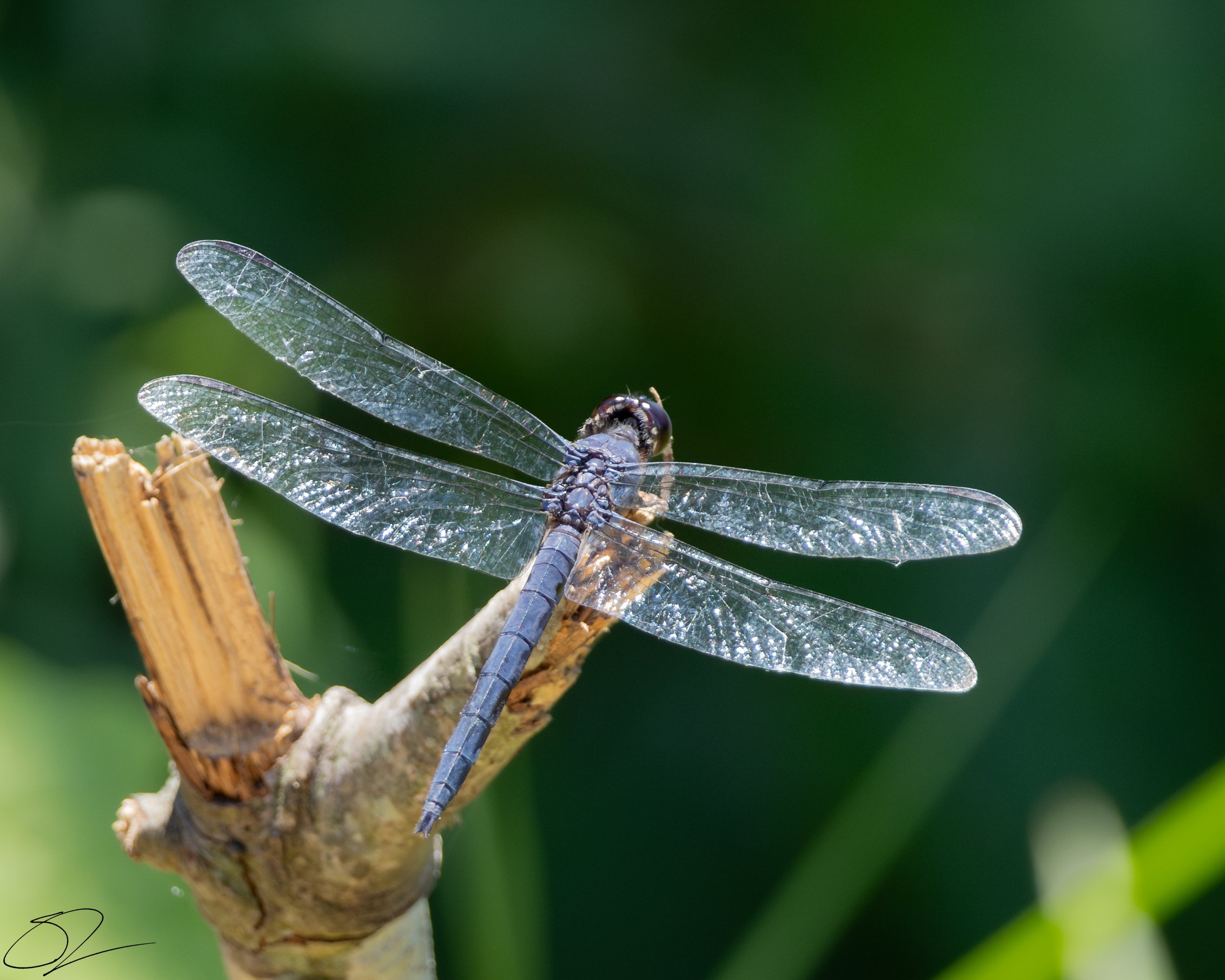
Arkansas Insects
Different insect and Arachnid species from the Natural State. As I add them I will place additional information along with the image.
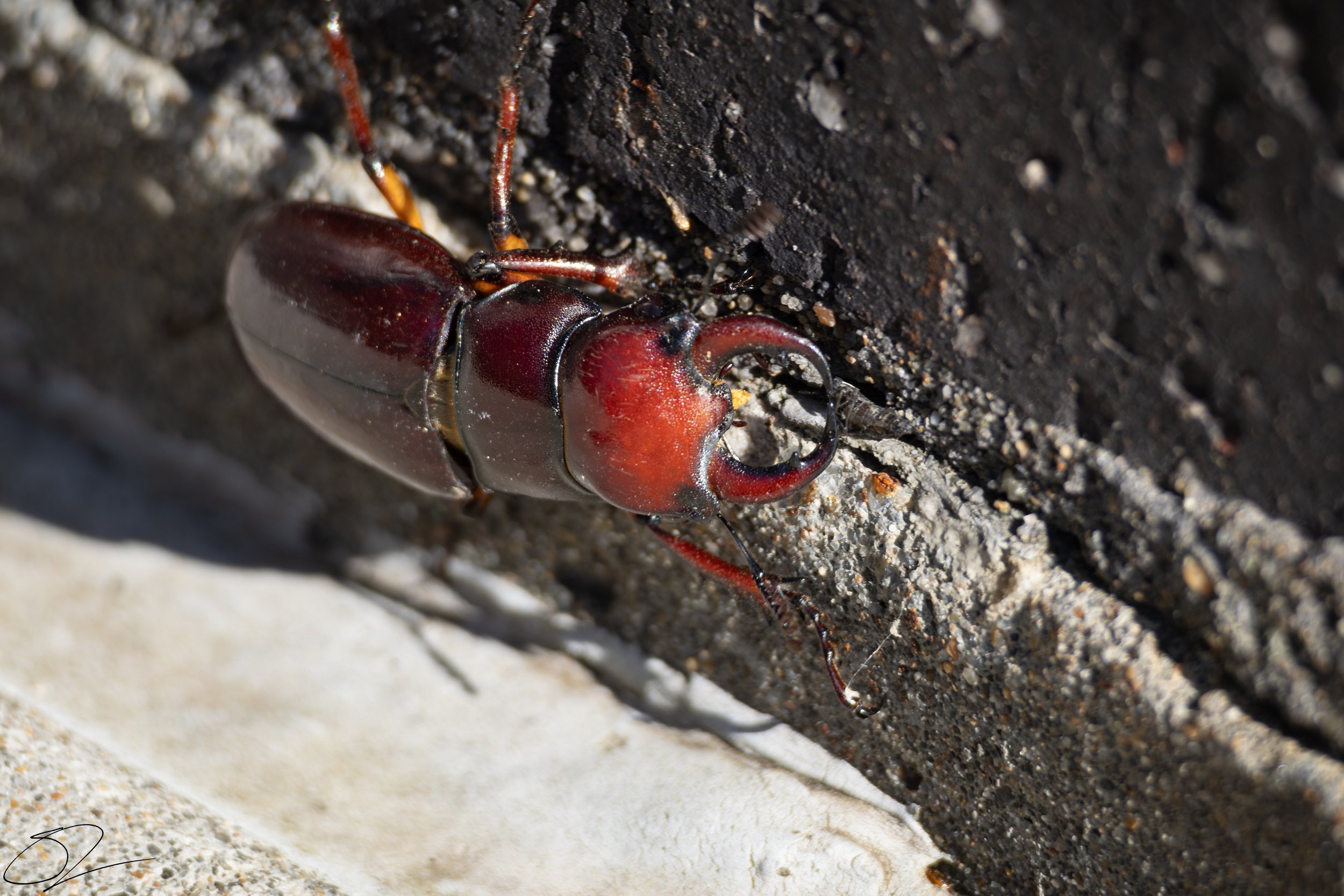
Reddish-Brown Stag Beetle ~ The mandibles on the male are generally reserved for male-to-male combat when it comes time to woo a female Stag Beetle. Among males, younger males have shorter mandibles than older ones. The mandibles on the female are much shorter than that of the male. Its exoskeleton appears smooth and glossy and has a rich dark red or brown hue to it. This species is different from other Stag Beetles thanks in part to the orange or yellow coloring at the base of each leg.

Imperial Moth ~ The Imperial Moth stands out and can't be confused with another. Yellow with spots and speckles of orange, brown, or even pink. Their caterpillar form is large with 4 prominent spikes on the head.

Katydid ~ The Katydid is a green, leaf-like insect belonging to the family Tettigoniidae, known for its excellent camouflage. Found in forests, grasslands, and gardens worldwide, katydids are mostly nocturnal and recognized for their distinctive, rhythmic chirping produced by rubbing their wings together. They typically measure 1-2 inches in length and feed on leaves, flowers, and sometimes small insects. Katydids play a vital role in ecosystems as both herbivores and prey for birds and other predators. Their unique appearance and sound make them a fascinating part of the natural world.
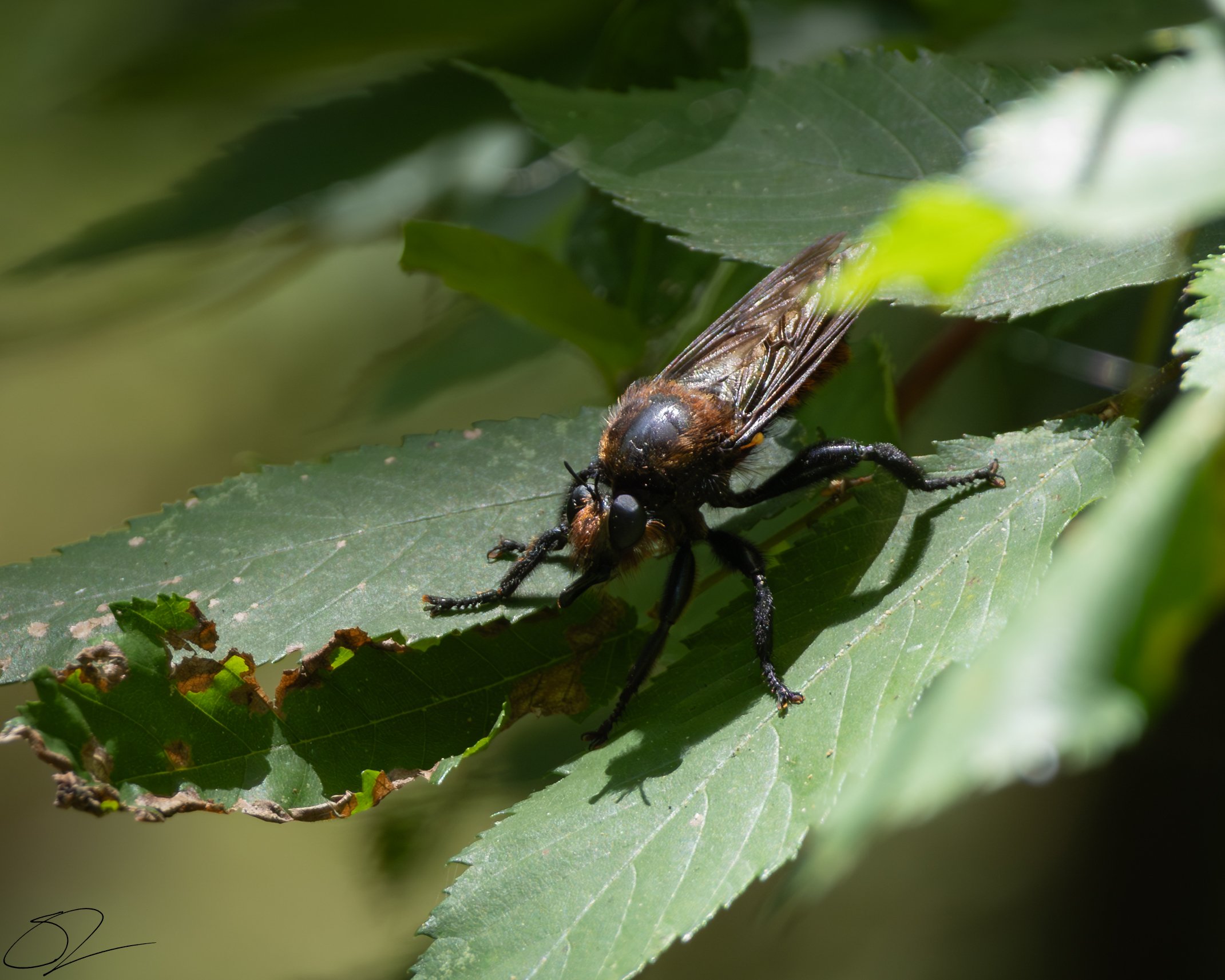
Bumble Bee Robber Fly ~ The Bumble Bee Robber Fly is a predatory insect that mimics bumblebees in appearance but belongs to the robber fly family (Asilidae). It has a fuzzy, yellow-and-black body, aiding in its disguise while hunting other insects in forests, meadows, and gardens. Unlike bees, it does not collect pollen but instead captures prey mid-air using its strong legs and piercing mouthparts. These flies play a vital role in controlling insect populations and are known for their swift flight and ambush hunting tactics. Their mimicry helps them avoid predators while being effective aerial hunters.

Giant Stag Beetle ~ one of the largest beetles in North America, known for its impressive size and the large, antler-like mandibles of the males. These mandibles are used for combat with other males during mating season. Ranging from 1 to 3 inches in length, they have dark brown to black bodies with a glossy exoskeleton. Found in forests and wooded areas, they primarily feed on tree sap and decaying wood as larvae, while adults consume minimal food. Despite their intimidating appearance, they are harmless to humans and play an essential role in breaking down decomposing wood in their ecosystems.
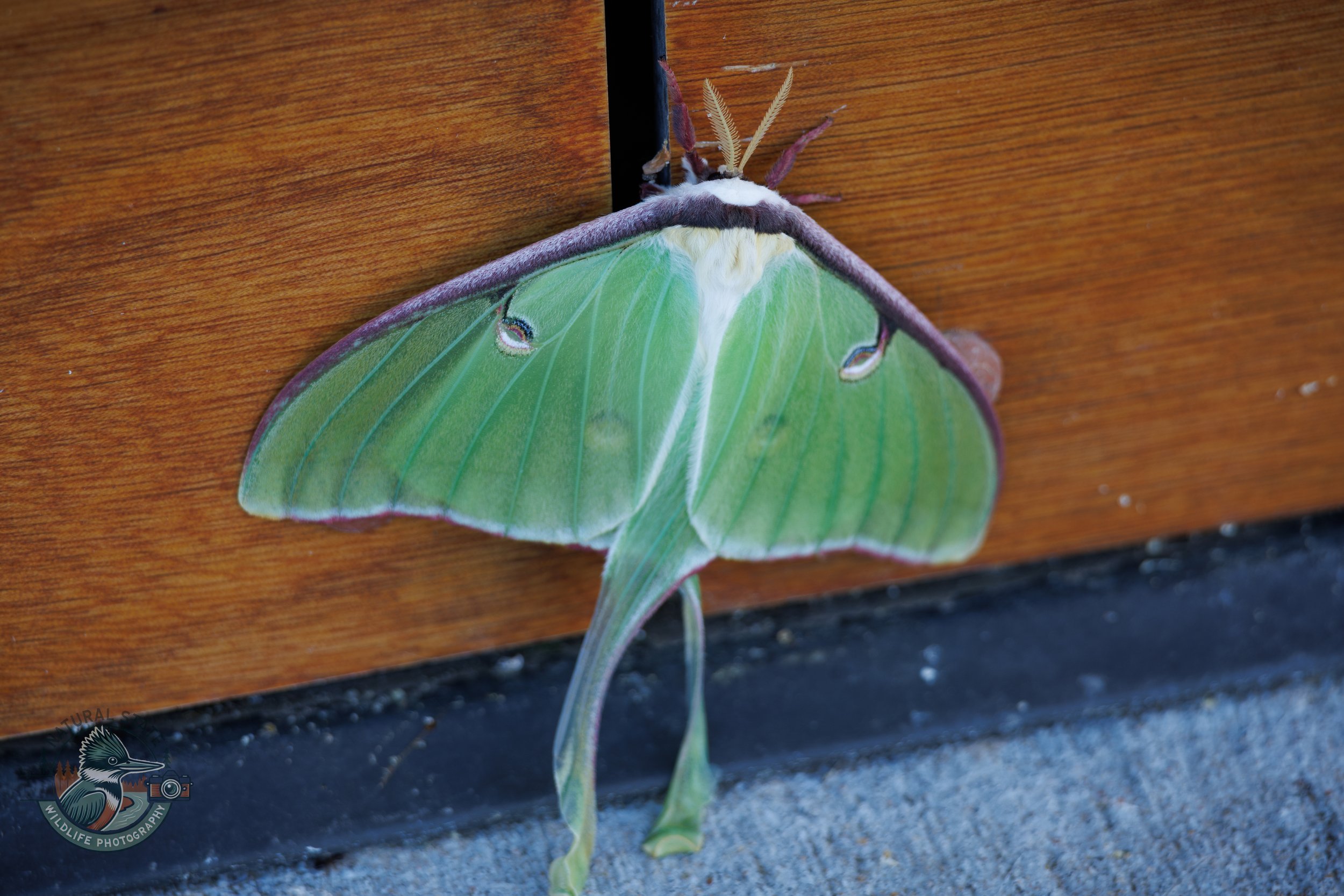
Luna Moth ~ (Actias luna) is one of North America's most striking and beloved moths, known for its large size and pale green, moon-like wings with long trailing tails. Adults have a wingspan of up to 4.5 inches and feature eyespots on each wing that help deter predators. Luna Moths are mostly nocturnal and are attracted to light. As adults, they do not eat and live only about a week—just long enough to mate and lay eggs. Their larvae, or caterpillars, feed on a variety of tree leaves, including hickory, walnut, and sweetgum. Their beauty and short adult lifespan make them a rare and magical sight.
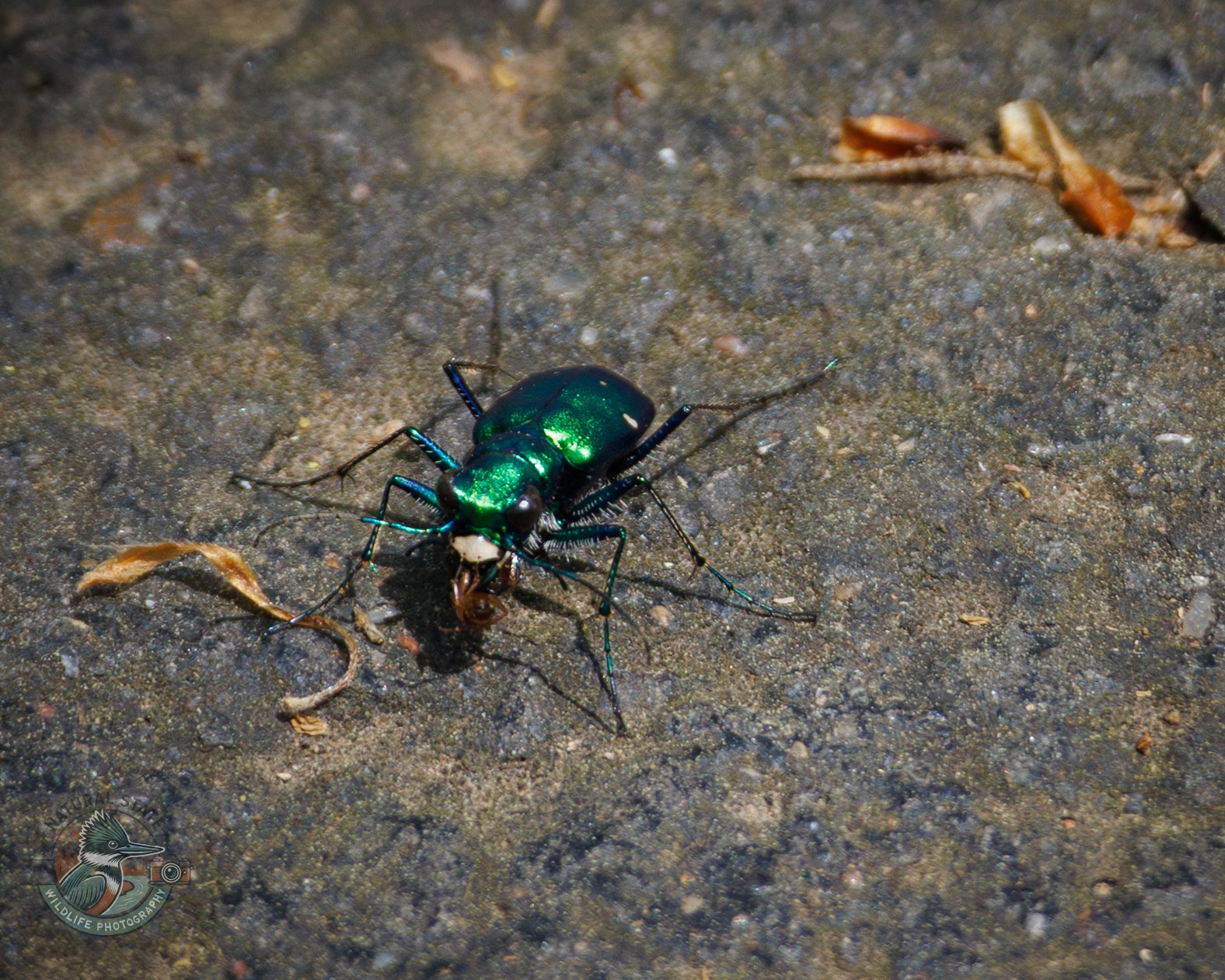
Six-spotted Tiger Beetle ~ (Cicindela sexguttata) is a small, fast-moving beetle known for its vibrant metallic green body and aggressive predatory behavior. Typically found along forest paths, trails, and sunny clearings in eastern North America, it gets its name from the six tiny white spots often (but not always) visible on its wing covers. These beetles are agile hunters, preying on small insects and arthropods, using their strong jaws to capture and consume their prey. They are also swift runners and capable fliers, often darting away when approached. Their striking appearance and speed make them a favorite among insect enthusiasts and naturalists.